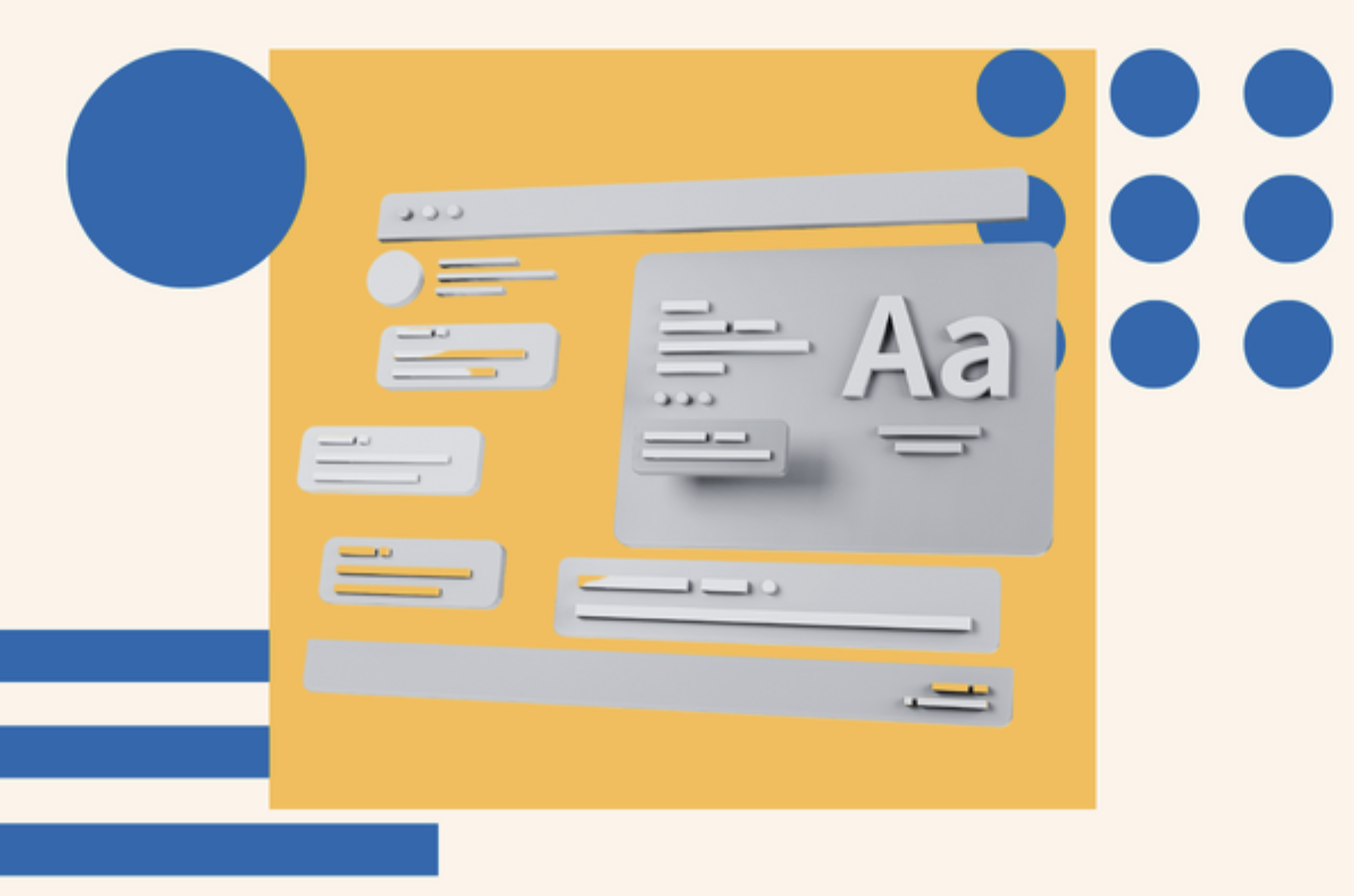When we first posted a photo of our do-it-yourself design ebook cover on Facebook, one of our fans challenged us a bit on whether we really designed the cover ourselves by commenting, “I bet 1 million $ they hired someone to design that image.” Since I’m the guy who leads the creative services part of our Brand & Buzz team at HubSpot, I figured I would step out from behind the curtain and share the truth about how we go about designing our content.
Yes, we do have a great little creative department at HubSpot, and one of our designers did create the ebook cover image. Recently my team has gotten a lot more involved in the design of our content, but it hasn’t always been that way. The truth is that the vast majority of our ebooks and other resources are created by non-designers on our marketing team. In fact, it would actually be pretty impossible for our small design team to touch every single piece of content we create.
That's why do-it-yourself design is so important, and why I recently compiled 10 Commandments of Do-It-Yourself Design -- to help teach and empower our marketers to create content that was up to a design standard that our actual designers could feel comfortable with. Since the Commandments went over so well internally, I figured I’d share them here. They were written with marketers in mind, but any non-designer can benefit from these 10 pointers.
The 10 Commandments of DIY Design
Want examples? Find them in the SlideShare presentation below -- created by one of our very own non-designer marketers.
1) Thou Shalt Understand Thy Content’s Purpose
It’s impossible to know how to design your content without first knowing what you’re trying to accomplish. The first thing any content creator – from novice copywriter to advanced designer – needs to do in order to ensure the s/he creates a successful piece of content is determine what needs to be achieved by creating said content.
By taking the time to carefully consider the need, ask the relevant questions, compile the requirements, and determine the success metrics, you can significantly improve your chances of creating content that blows viewers and readers away. Just remember: it never hurts to know more information, and you’ll thank yourself later for having taken the time earlier. In fact, don’t be surprised if in the end you replace your original solution with one that is more successful in satisfying your goals.
2) Thou Shalt Establish a Hierarchy
Once you understand what you're trying to achieve and have brainstormed some solutions, you can begin considering exactly how you're going to go about putting it all together. Begin this process by looking at your content from a macro level; consider all of the required copy, calls-to-action, links, and any other written or visual elements that need to be included in the final deliverable. Evaluate how they each compare in terms of their importance and ability to help you accomplish your goal. By determining the relative importance of all your written and visual elements and prioritizing them accordingly, you will begin to build an information hierarchy that will act as your guide to simple, elegant, and more effective design.
Without first creating a thoughtful information hierarchy in your mind, it will be impossible for you to design a meaningful visual hierarchy, the result of which would be a finished piece of content that is little more than a bunch of disconnected visual pieces, each competing for attention. In other words, visual noise. Understanding the relative importance of your written and visual elements will not only build the framework from which you can begin to make design decisions, but will also ensure that you present your information in an easily digestible manner -- which is exactly what good design is all about..
3) Thou Shalt Respect Simplicity
More often than not, less is more. Unfortunately, there is a terrible misconception that good design is flashy, ornate, loud, or otherwise “eye-catching.” Don’t believe it for a second. Design is not art. Rather than focusing primarily on form or expression (as is often the case with art), the primary function of design is the exact opposite -- to support function.
Don’t try to do too much, and avoid actively trying to make your design unnecessarily ornamental. The content should always be the focus, not the design. The most successful designs satisfy laying out and highlighting the written and visual information without calling attention to the highlight itself. Good design shouldn’t be loud. In fact, it’s often completely invisible.
4) Thou Shalt Keep It Legible
One thing that is commonly overlooked when thinking about design is the fact that your text itself can create its own visual noise. If it can’t or won’t be read, then why bother including it at all?
To avoid confusion among readers or viewers, there are common sense (and commonly ignored) solutions to increasing legibility, such as avoiding placing light text on a light background or dark text on a dark background. However, the real pitfalls of using text incorrectly don’t deal with the placement at all, but rather the amount of it.
Marketers and content creators love their words, and for good reason; they’re the tools they most use to communicate. However, they often have a tendency to write far more than necessary. When it comes to creating well-designed content, this is a bad thing. Writing concisely reduces the visual noise of your content and ensures that only the critical, most important content remains. Take a moment to consider if there are unnecessary words you can delete. Just remember Steve Krug’s Third Law of Usability: Get rid of half the words on each page, then get rid of half of what’s left.
5) Thou Shalt Provide Adequate Spacing
Allow the visual and written elements in your design to have a little personal space. Negative space (space not occupied by any visual or written elements) is okay. In fact, it can be great. By allowing yourself a bit more breathing room, you increase the impact of your most important bits of information, such as headlines or CTAs. Again, this is exactly what good design should do.
Follow these steps to ensure you have enough space: first, arrange your content according to the information hierarchy you established earlier. Then, consider how the spacing should complement that hierarchy. Most importantly, make sure your spacing is consistent. Margins should be the same width and height, and leading (the amount of space between two lines of text) should be the same for all similar types of text. Finally, if the amount of information you have requires you to reduce your spacing to the point that everything feels cramped, either move some of the information, or remove it altogether.
6) Thou Shalt Align Thy Elements
When laying out your visual and written information, make sure that all of the elements are positioned in a balanced relation to one another. Always position your design elements to sit on the same line. Although there are exceptions, it’s better to err on the side of caution with alignment as a non-designer. Alignment will ensure your design is clean, without creating any unnecessary tension or focal points. Non-designers who focus on aligning their written and visual elements in a very simple, linear way will vastly improve the quality of their designs.
7) Thou Shalt Coordinate Thy Colors
The tendency of non-designers is to try to do too much with color in hopes of making a design more eye-catching. More often than not, the result is actually just a clash of competing visual noise. To avoid this, it is usually helpful for non-designers to make color choices based on the feeling or connotation of the color.
The first thing you should consider is the kind of feeling you want your content to elicit. If you’re aiming to present a more humanist or energetic tone, you should choose a warm color, such as orange, yellow, or red. If you want your content to give off a calmer, more professional feel, choose a cool color, such as purple, blue, or green.
Additionally, be mindful of the connotation associated with certain colors. For example, red typically has a negative connotation, signifying cancellation or error. Aligning the purpose of your content with a color that has a similar connotation can be a great way to choose which colors to include in your design.
8) Thou Shalt Not Overuse Drop Shadows
The purpose of a drop shadow is to add distinction to visual or written information by creating depth and bringing the affected information to the forefront. This is a great result, and often exactly what you want or need to do to certain elements from time to time. However, overusing the effect leads to the exact opposite result. If you’re adding an effect such as the drop shadow to every written or visual element, then you’re not giving distinction to any particular bit of information. Instead, you are just creating unnecessary visual noise which complicates your design and makes it difficult for a consumer to receive the information you're trying to present. The takeaway, then, is this: effects are great when used with purpose, but don’t use them just for the sake of using them.
9) Thou Shalt Strive for Consistency
Simply put, if two or more design elements serve the same function, make sure they look and act the same. On a very high level, the same aesthetic, tone, and messaging should permeate all facets of the brand. On a more granular level, all visual or written elements within, say, an ebook, that are serving the same function should have the same look and feel.
When it comes to designing specific content, consistency involves using the same fonts and font sizes for text of the same kind. Make sure that actionable items, such as links or calls-to-action, all share a similar color and appearance, have aligned margins so that they're all the same width and height, etc.
10) Thou Shalt Harmonize Visual and Verbal
For most non-designers, content creation typically revolves almost entirely around writing copy. Naturally, then, added visual elements are more of an afterthought, seeking simply to break up the monotony of text or page layout. The best content, though, is created when both text and visuals are combined to tell the story and present the information in a more powerful, more engaging, and ultimately more successful way than either visual or verbal could do alone.
Avoid this silo between visual and verbal by planning ahead. Whether writing ebooks, checklists, tweets, or emails, copywriters should already be considering how they can express that information visually. This doesn’t mean identifying the concepts worthy of bold or enlarged lettering; it means identifying where visual elements could completely replace large selections of copy to tell the same story in a significantly more memorable, less time consuming way.
Now that you have some design basics down, what will you go create?


![12 Web Design Best Practices & Guidelines for Usability in 2025 [+ Expert Tips]](https://www.hubspot.com/hubfs/website-design-1-20241121-4075840.webp)








